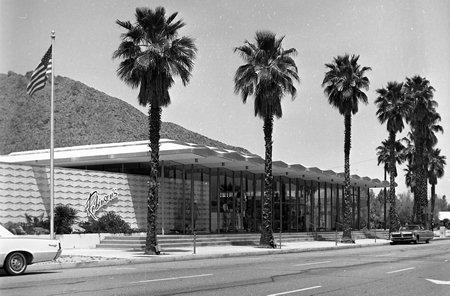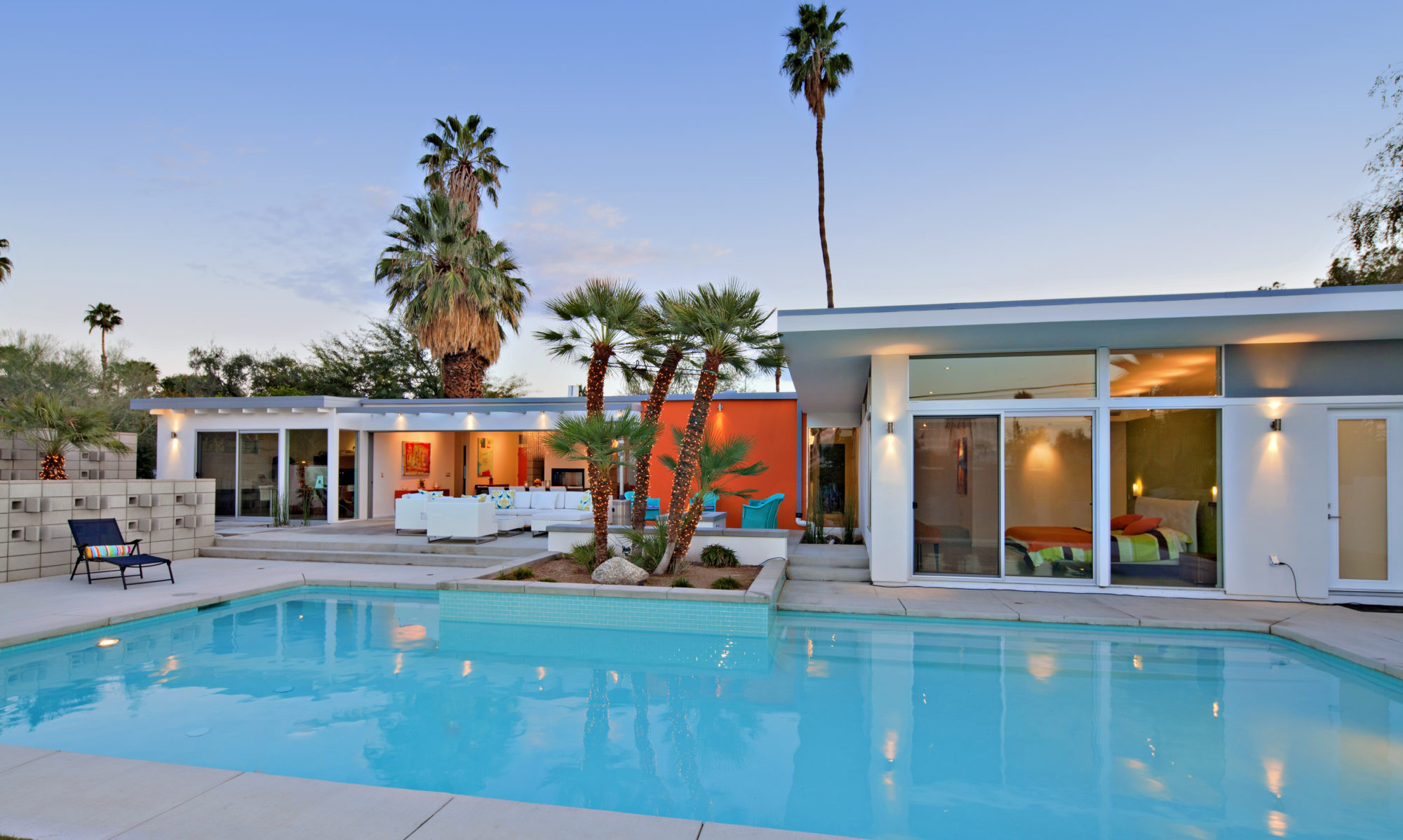
Last week, the Palm Springs City Council voted unanimously to designate the J.W. Robinson’s Department Store building a Class 1 Historic Site.
The free-standing building on South Palm Canyon Drive at West Baristo with its dramatic elevated entrance and graceful pavilion style, is an important component of historic trends that have come to define Palm Springs as an epicenter of mid-century architecture.
Designed by the Los Angeles architectural firm of Charles Luckman Associates and William Pereira in 1957-58, the building received a National Honors Award that same year by the American Institute of Architects, one of the most prestigious architectural awards ever given to any Palm Springs project, commercial or residential.
Last year, the Palm Springs Preservation Foundation (PSPF) launched an initiative to author Class 1 Historic Site recommendations for various commercial and residential buildings throughout Palm Springs and the Coachella Valley. The J.W. Robinson’s nomination, written by PSPF board member Ron Marshall, was lauded by the city council as well-researched and ultimately, convincing.
Marshall defended the PSPF’s position to protect the building as an “outstanding example of commercial design and construction of building within the context of midcentury desert modernism” because it possesses a number of distinctive characteristics that define modernism style.
The building includes a flat roof with clerestory windows, expansive amounts of glass, novel use of (then) new materials and engineering techniques, idiosyncratic use of concrete masonry. And, finally, the building is categorized as the work of “master architects,” given the award winning, nationally recognized status of Luckman & Pereira.
Also, the nomination recognizes historic “patterns of events” or historic trends. The JW Robinson building was constructed during the gradual rise of midcentury architecture in Palm Springs.
At the time, J.W. Robinson Company was a chain of department stores in southern California and Arizona, headquartered in Los Angeles with stores in downtown and Beverly Hills. The rather small Palm Springs store was intended to be open in winter only. A Robinson’s on Colorado Boulevard in Pasadena, which opened shortly after the Palm Springs location, was the last free-standing store, as the concept of the shopping mall began to arise.
According to Marshall’s treatise, one of the most prominent design elements of the Palm Springs Robinson building is the glassed in, well lighted facade facing Palm Canyon which acts like a giant display window. The windows were designed to lure automobile drivers off the main street and into the large parking lot behind the building. Thus, even the site design recognized the importance of both pedestrian shoppers and those driving by in automobiles.
An article in the March 1958 issue of Architectural Forum describes the Robinson’s building:
“Glass front walls, sheltered by deep overhangs, make the entire interior a showroom… enticing the motorist to park and come in. Once he is inside, the center of the store, a 3-foot-deep clerestory perched on the roof, gives him back his view of the mountains, in whose lap Palm Springs sits. The psychology is deliberate.”
The magazine describes the roof as a series of light steel trusses linked in a serrated pattern and set on lean pipe columns.
“Nowhere does this roof rest on walls, even at the solid masonry rear of the store.”
By 1958, Palm Springs had built a reputation for cutting edge architecture with such practitioners as Albert Frey, John Porter Clark, E. Stewart Williams, William F. Cody, and Donald Wexler. Palm Springs’ celebrity associations with Hollywood also established a sophisticated clientele.
Even the grand opening of the JWR Palm Springs, as it became known, was attended by “throngs of local residents” and at least one celebrity: Liberace.
During the post WWII era, tourism flourished, transforming the sleepy Palm Springs village into “an increasingly cosmopolitan environment that saw the construction of schools, hospitals, an airport and other important public works projects.”
The J.W. Robinson’s building, whose form, plan, space, structure and style have remained remarkably intact, is truly an historical treasure that beautifully reflects Palm Springs’ innovative midcentury heritage.
Pamela Bieri
